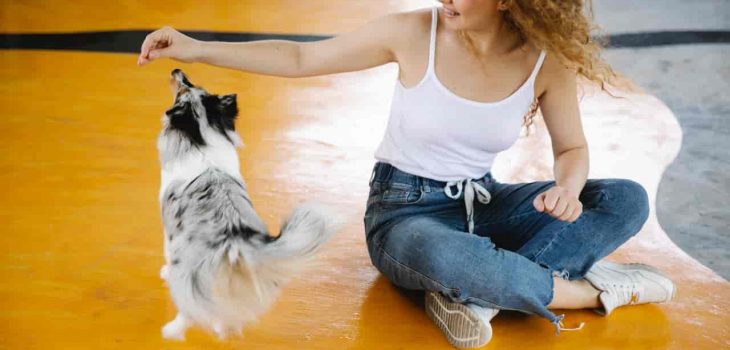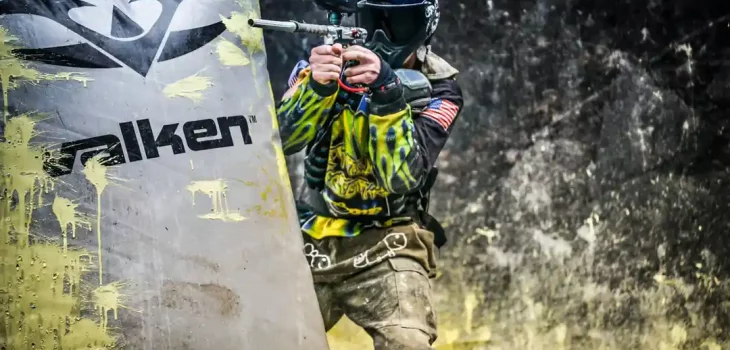How to Train Your Dog to Enjoy Sports
Dogs love sports and playing with toys. But sometimes, this intensity can be too much for a dog to handle. So how do you train your dog to enjoy sports and prevent him from injuring himself? It’s simple; follow these steps.
How to train your dog to enjoy sports
If you have a dog that enjoys playing fetch and other games, it is easy to see how this behavior could be translated into training for a sport like agility.
Agility is an excellent way for dogs to exercise and can be fun for both the owner and the pet. However, it does require some training and practice.
The first step to training your dog for agility is to get them excited about it. This can be done by taking them to an agility course or even just practicing with their favorite toys at home.
The next step is teaching your dog how to run through obstacles using positive reinforcement. The best way to do this is by rewarding them when they do something right, such as jumping over an obstacle or running through an open tunnel without stopping or turning back.
Once your dog understands that they will receive rewards when they perform these tasks correctly, you can start adding in more challenging obstacles such as jumping over hurdles or walking across planks placed on top of tires that are spinning around at high speeds!
How to prevent your dog from injuring himself
It’s common to worry about our dogs while on a walk, but we often forget that they can get injured at home.
Here are some tips to protect your dog from hurting himself:
- Make sure your pet is comfortable with the surface he’s walking on. If it’s slippery or uneven, he might trip and fall.
- Don’t allow your dog to jump off furniture or beds. He could hurt his paws or his back when he lands.
- Keep electrical cords out of reach of your dog’s mouth; if he chews through them, he could be electrocuted or burned.
- If you have a swimming pool, make sure there are no holes in the fence around it so that your dog doesn’t accidentally fall in and drown or get hurt by broken glass or sharp objects inside the pool area. Never leave a gate open around the pool area when you aren’t home so that your dog doesn’t wander into it unsupervised and get hurt.
Some helpful tips
We all know that dogs love to play and run, but sometimes they need a little help learning to enjoy a sport.
Some helpful hints to get your dog started on the right track:
- Find a sport your dog likes: Some dogs like to chase, others like to retrieve, and some want to chase after balls or Frisbees. Try another if you cannot find any interest in one particular activity.
- Always train in the natural environment: It is essential to teach in the natural environment so that your dog understands what he needs to do when he gets into the game.
- Be patient: Training takes time and patience, but don’t give up too soon! You will see results with consistency and repetition.
- Use treats as rewards: Treats are a great motivator for training. They are given immediately after correct behavior happens or when you want your dog’s attention on something besides what he was doing before giving him his reward (i.e., food!).
- Train for short periods: This will help keep your dog interested in what you are doing and not get bored with the repetition of drills repeatedly!
- Use repetition: The best way to get your dog used to any activity is to repeat it constantly until he becomes comfortable with it. This will help ensure that you don’t accidentally put him into an unfamiliar situation without proper preparation.
- Keep training fun! The most important thing is that your dog enjoys what you’re doing together. If he’s not having fun, he won’t want to participate in future activities.
- Choose an activity that fits your schedule: You must choose an activity that fits into your lifestyle and plan so that both of you can easily participate in future workouts.
- Identify any obstacles early on: Some obstacles may arise when introducing a new activity, such as fear or anxiety, or lack of interest or motivation, which could make things challenging for both of you later on down the road if left unaddressed at first glance (or even worse, ignored altogether!).
Conclusion
In this blog post, we have provided some steps for training your dog to enjoy sports without getting injured.
We hope that these steps will help you get your dog involved in sports so he can still have fun and play with toys.
If you have any further questions, don’t hesitate to reach out to us at wapost.
Be grateful for reading; we are always excited when one of our posts can provide helpful information on a topic like this!







